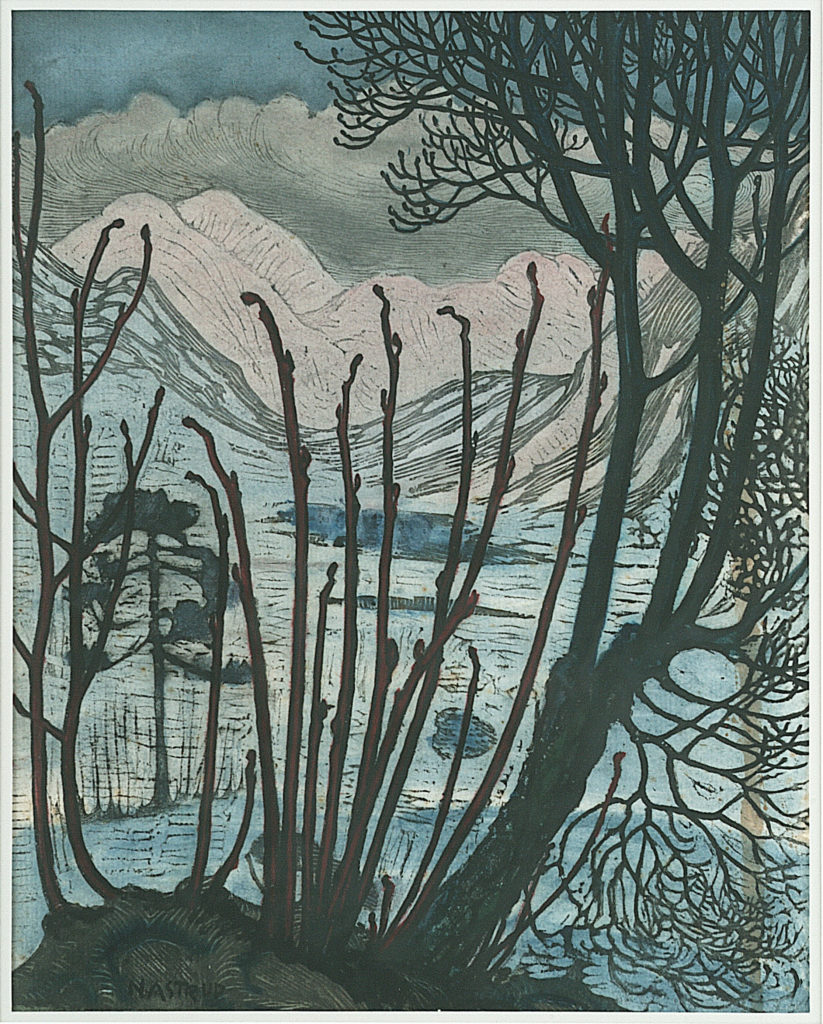Elements from Spring and Will

Nikolai Astrup (1880-1928) came from a longstanding civil servant family and grew up in the remote little mountain village of Jølster in the western reaches of Norway. He also chose to remain living here for most of his life. Although Astrup settled in the provinces, far from the cultural centres and active art milieus, he was not at all self-taught as an artist. He made several study tours in Norway as well as abroad, and was well-versed in the latest, contemporary Norwegian and European art.
Throughout his entire production Astrup concentrated on close and familiar motifs as themes for his artistic endeavours. His collected works can in many ways be considered a series of the seasonal depictions, a kind of frieze, in which he focuses on the fertile and enigmatic nature of Jølster. As a rule, people play a subordinate role in Astrup’s pictures. It is not primarily humans but the landscape and nature that interest him.
In certain pictures, however, we see how Astrup gives the landscape human form. It is a question of nature animation in which the human being and its surroundings become one in a tangible sense. In Elements from Spring and Will he has given the large mountain formation in the background, which is known locally as the ‘Ice Queen’, the shape of a reclining woman with generous attributes. On the one hand, it is as though Mother Earth herself has come to life, as though she is keeping watch over both the landscape and humans, but on the other hand she is frozen to the spot and covered in ice and snow. It’s true that the mountain range does actually resemble a reclining woman in real life, and it seems that the mountain was named long before Astrup’s time. Just the same, there is nothing automatic about depicting the mountain in this way – it is a characteristic expression of Astrup’s uniquely personal vision of nature.
OWG